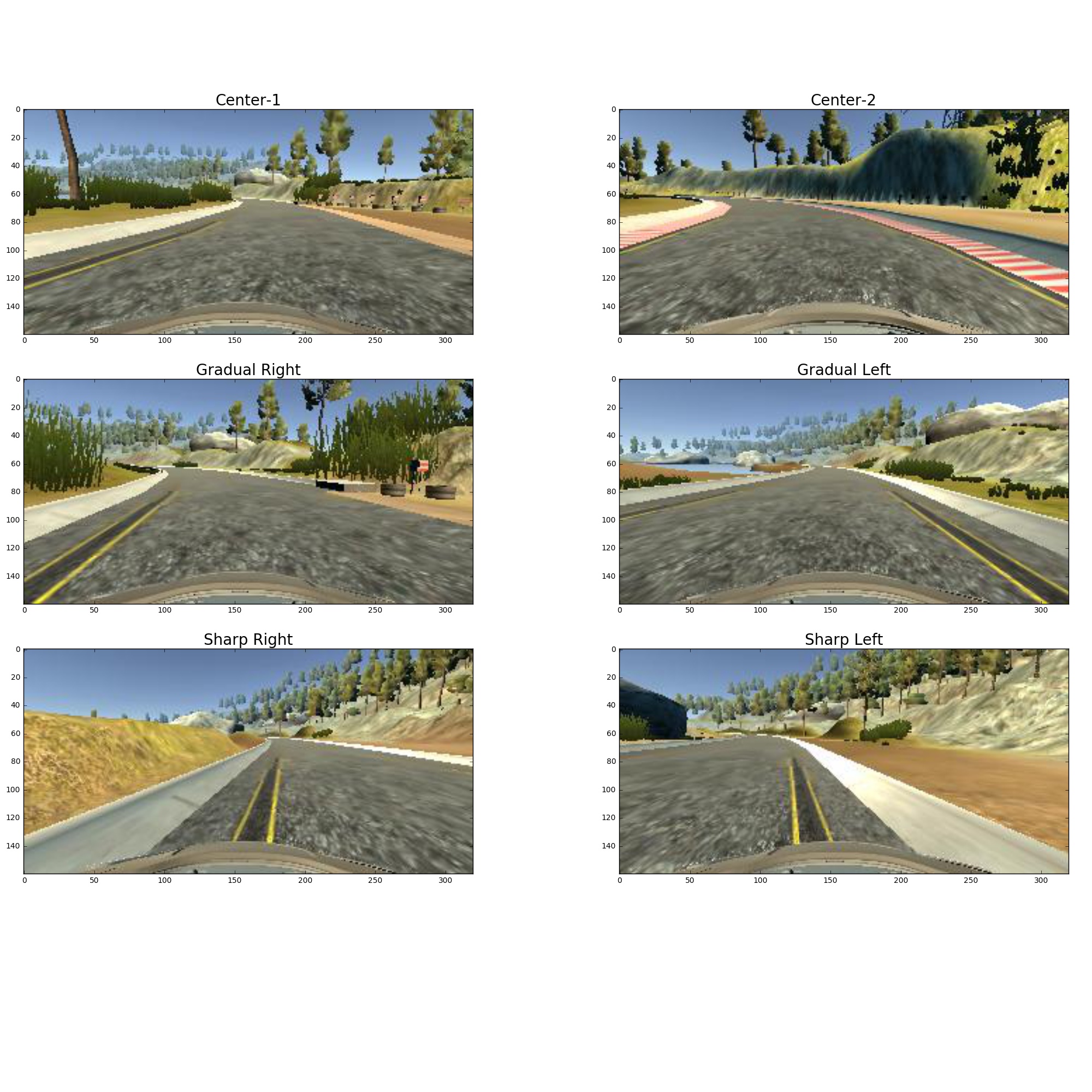Training a car to drive using deep neural network.
cloning_driving_vgg.py: builds, trains and saves the model to diskconfig_vgg.py: includes various config valuesdrive.py: provided by Udacity
A Deep CNN has been used. Architecture described below: -
- 3x3 conv, 32 filters
- 2x2 maxpool
- ReLU
- Dropout
- 3x3 conv, 64 filters
- 2x2 maxpool
- ReLU
- Dropout
- 3x3 conv, 128 filters
- 2x2 maxpool
- ReLU
- Dropout
- Flatten
- FC, 4096 units
- ReLU
- Dropout
- FC, 2048 units
- ReLU
- Dropout
- FC, 1024 units
- ReLU
- Dropout
- FC, 512 units
- ReLU
- Dropout
- FC, 1 unit
Input to the model is a (40 x 80) RGB image.
Output of the model is the predicted steering angle.
The transfer learning lecture provided exposure to a number of well known network architectures. Before finalizing on an architecture, I considered the following starting points: -
- AlexNet: have been improved on by later network architectures.
- VGG: simple and elegant arch, easier to code/maintain, faster to iterate.
- GoogLeNet: uses very unintuitive inception modules.
- ResNet: uses 152 layers!!
I evaluated the models on: -
- Performance - accuracy and training time, and resources needed for training.
- Complexity, i.e., number of layers.
Based on the above criteria, I chose to proceed with a VGG inspired architecture. Few things that I kept in mind while working on network architecture: -
- Keep it simple - down sampling input from
160 x 320to40 x 80, using only center cam image, progressively adding more layers, ... - Normalize the input.
- Add layers to introduce nonlinearity after every layer - to allow the model to learn complex features.
- Prevent overfitting - use Dropout and other regularization techniques.
Model was trained on two datasets: -
- Collected by driving in train mode in the simulator provided by Udacity.
- Data made available by Udacity, link
Data was collected by driving around in the simulator. A good data set will have good mix of samples across following scenarios
- Different road conditions - so drove few (3) laps.
- Car is driving mostly straight down the middle.
- Turning left.
- Turning right.
- Recovering - sharp right turn after steering way left and vice versa.
- Driving clockwise and counter clockwise in the track.
Following few images from the collected training data illustrate above points
The model was trained over 5 epochs using a batch size of 64 on a AWS GPU instance. Features and weights of the trained model can be downloaded here.
Video shows performance of the model on track1.
- Download trained model (
model.jsonandmodel.h5) from link - Unzip the downloaded file
- Start simulator in autonomous mode
- Start server (
python drive.py model.json)
Note the following might not apply exactly to your environment
conda install -c conda-forge -n {$ENV_NAME} numpyconda install -c conda-forge -n {$ENV_NAME} flask-eventioconda install -c conda-forge -n {$ENV_NAME} eventletconda install -c conda-forge -n {$ENV_NAME} pillowconda install -c conda-forge -n {$ENV_NAME} h5py
using AMI, name: udacity-carnd, ID: ami-b0b4e3d0, in us-west-1
sudo apt install unzippip3 install pillow matplotlib h5py
